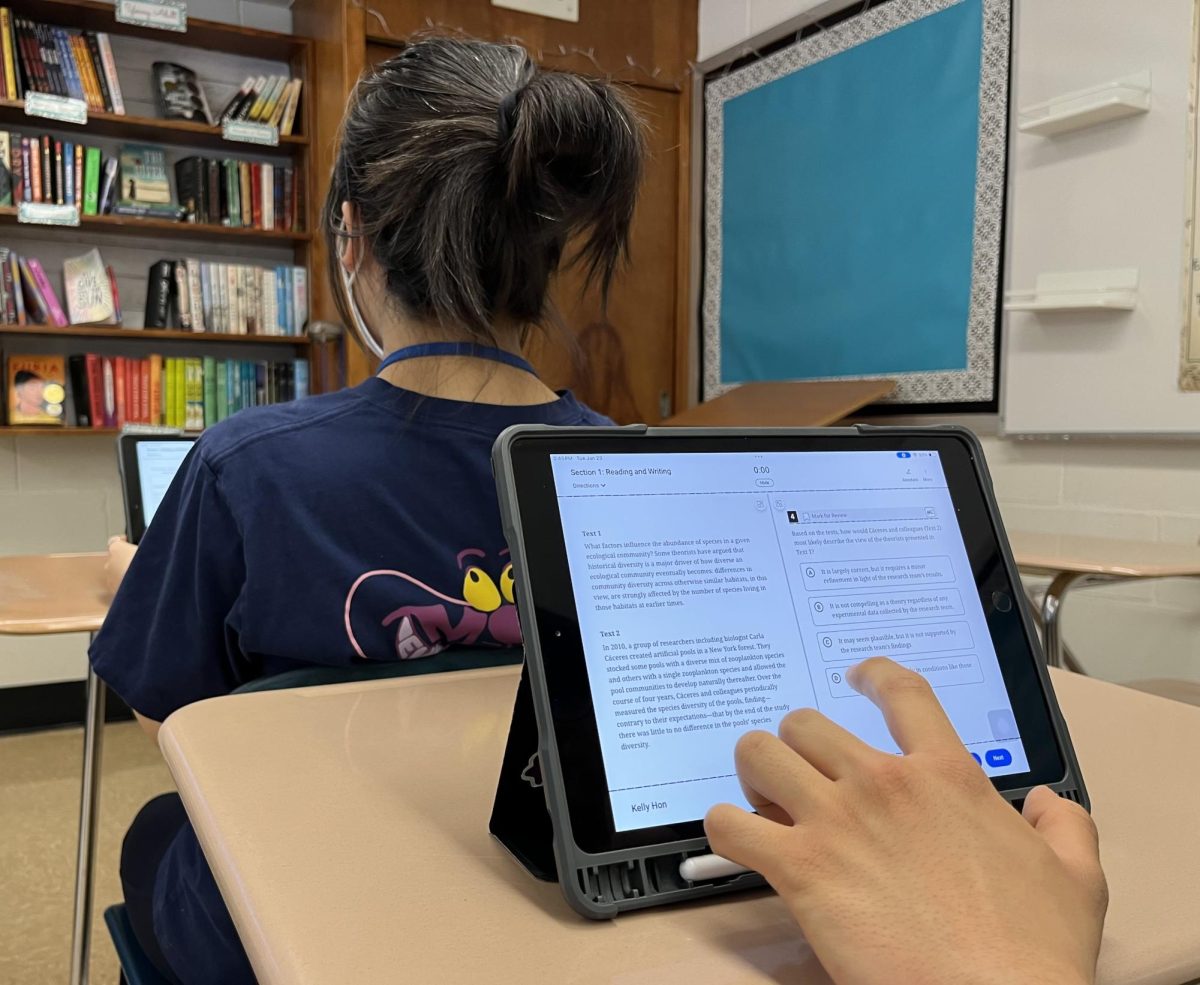This past October, Great Neck South High School administered the College Board’s new digital PSAT in preparation for next spring’s digital launch of the SAT. On Thursday, October 19, 449 sophomores and juniors came into school early in order to take the new PSAT exam on their iPads.
Unlike other digital exams, the digital PSAT and SAT exams are adaptive, which means that the second portion of each exam section changes based on how well you did during the first (in both the English and math sections). Doing fairly well in the first reading and writing module leads to a more difficult second reading and writing module. Conversely, doing poorly in the first reading and writing module leads to an easier second reading and writing module. According to the College Board, the test was designed this way to be more personalized to each student and provide a better representation of how a student will function in college and the workforce.
In an effort to decrease test anxiety, both the PSAT and SAT exams were shortened, with the PSAT shrinking from 137 questions to 98 questions. Along with fewer questions, the new version gives students more time per question; this allows them to think through their answers more carefully instead of feeling as though they are racing against time. The decision to shorten both tests was made in an effort to increase fairness, especially since both tests have been criticized for giving students in wealthier school districts an edge over those from poorer districts. The College Board also shortened the reading passages and provided students access to a calculator for the entire math section.
It’s important to note, however, that digitizing the testing process has its flaws: one study published in the British Educational Research Association (BERA), found that reading digital texts may prompt poorer comprehension in comparison to paper texts. According to Maryanne Wolf, a developmental psychologist and cognitive scientist at Tufts University, “There is physicality in reading, maybe even more than we want to think about as we lurch into digital reading—as we move forward perhaps with too little reflection.” She believes that the world’s gradual transition from paper to digital text over the past few decades has been detrimental to our brains, since the tangibility of paper text has been shown to connect to our ability to deeply visualize and comprehend what we’re reading. Contrastly, it’s easy for our brains to get lost in the endless stream of digital text.
As for Nara Lee, a current junior who took the physical PSAT as a sophomore and the digital PSAT this past year, she believes that even though the digital version was “unquestionably simpler” to complete, she “would much rather take tests on paper since [she] would be less likely to become sidetracked.”
Most other juniors who’ve taken both formats of the tests feel the same way, and the new adaptive format has also gained mixed reactions. Junior Michelle Harris notes that she “feels like it’s not as standardized now as it would be on paper,” and that the new adaptive modules have contributed to more stress regarding test scores. “I overthink anyways, so now it’s even more so because I don’t know whether I did well or not, especially if I get a question that I think is easy,” Harris said. Furthermore, the space available for test taking shrunk dramatically with the switch from paper to digital testing. According to Mr. Hopkins, our school had to move test takers who would typically be in the gym to other classrooms, displacing many other classes. “During testing weeks, we can put almost 320 or 330 kids in the East gym, but we couldn’t put more than 90 in the East gym based on bandwidth,” he said.
Regardless of student opinions and logistical challenges, the SAT and PSAT will be administered digitally this year, with students taking the exams on their iPads.
As for the possibilities of the AP exams being administered digitally in our school, Dr. Cruz, the AP coordinator, explained why our school will likely not be administering digital AP exams this year: “We don’t feel we need to pilot a digital exam until it is vetted by the College Board and everything is working as it should be.” But soon, our school will need to adapt, as the College Board plans to fully digitize nine AP exams by 2025, which include some of our school’s most popular AP courses: AP Computer Science, AP English Language, AP English Literature, AP US History, AP World History, and AP Psychology.
Although the SAT and PSAT have been around since the early 1900s, they are starting to become less significant in the grander scheme of college applications. The implementation of test-optional policies at colleges have already dampened the significance of these tests, and the digitization and shortening of them only furthers this effect. At the end of the day, AP and SAT exams play a small part in what defines a good student. As Mr. Hopkins states, “I was always of the mindset that what a student did over the four years of their high school career was much more important than what they could do on one or two or four tests.”








